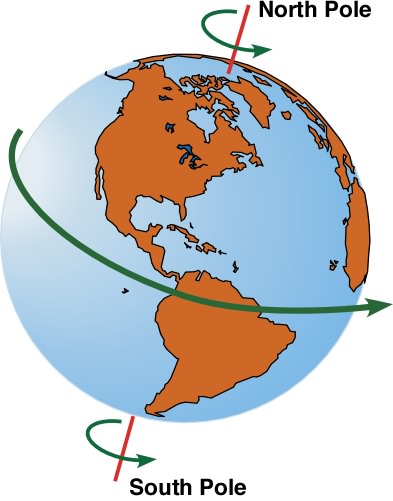Why is everything in the Solar System spinning? And why is it mostly all spinning in the same direction?
Why is everything in the Solar System spinning? And why is it mostly all spinning in the same direction?
It can’t be a coincidence. Look down on the Earth from above, and you’d see that it’s turning in a counter-clockwise direction. Same with the Sun, Mars and most of the planets.
4.54 billion years ago, our Solar System formed within a cloud of
hydrogen not unlike the Orion Nebula, or the Eagle Nebula, with its
awesome pillars of creation.
Then, it took some kick, like from the shock wave from a nearby
supernova, and this set a region of the cold gas falling inward through
its mutual gravity. As it collapsed, the cloud began to spin.
But why?
It’s the conservation of angular momentum.
Think about the individual atoms in the cloud of hydrogen. Each
particle has its own momentum as it drifts through the void. As these
atoms glom onto one another with gravity, they need to average out their
momentum. It might be possible to average out perfectly to zero, but
it’s really really unlikely.
Which means, there will be some left over. Like a figure skater
pulling in her arms to spin more rapidly, the collapsing proto-Solar
System with its averaged out particle momentum began to spin faster and
faster.
This is the conservation of angular momentum at work.
As the Solar System spun more rapidly, it flattened out into a disk
with a bulge in the middle. We see this same structure throughout the
Universe: the shape of galaxies, around rapidly spinning black holes,
and we even see it in pizza restaurants.
The Sun formed from the bulge at the center of this disk, and the
planets formed further out. They inherited their rotation from the
overall movement of the Solar System itself.
Over the course of a few hundred million years, all of the material
in the Solar System gathered together into planets, asteroids, moons and
comets. Then the powerful radiation and solar winds from the young Sun
cleared out everything that was left over.
Without any unbalanced forces acting on them, the inertia of the Sun
and the planets have kept them spinning for billions of years.
And they’ll continue to do so until they collide with some object, billions or even trillions of years in the future.
So are you still wondering, why does the Earth spin?
The Earth spins because it formed in the accretion disk of a cloud of
hydrogen that collapsed down from mutual gravity and needed to conserve
its angular momentum. It continues to spin because of inertia.
The reason it’s all the same direction is because they all formed together in the same Solar Nebula, billions of years ago.
